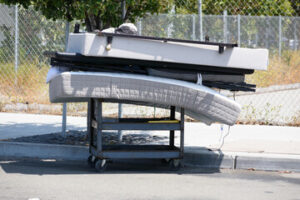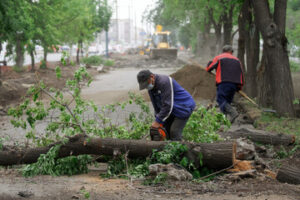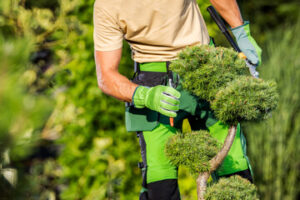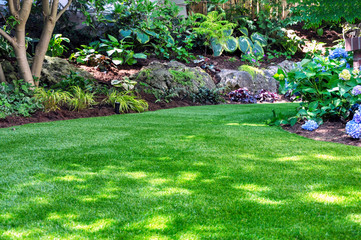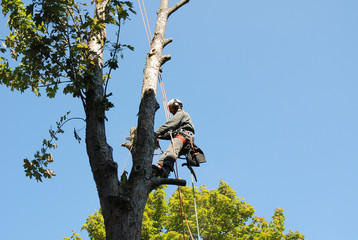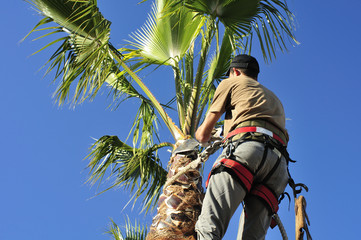Whether cleaning out the estate of a deceased loved one or simply trying to make room in your home, junk removal can be an overwhelming task. But with the right approach, it doesn’t have to be.
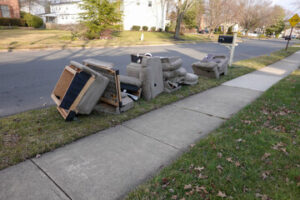
Start by separating waste items into categories. This will help you eliminate junk faster and prevent you from overworking yourself. If you need professional help, you can contact Property Clean Out Louisville.
Whether you’re dealing with the aftermath of a loved one passing away, going through a divorce or just getting organized, property clean out can be a stressful task. Many times, these jobs involve a lot of junk and require extensive clean up. Hiring a junk removal service can make this process easier and quicker. These companies specialize in cleaning out property, removing junk and debris, and even cleaning the area afterward.
They can help with both residential and commercial properties, including apartments, homes, businesses and even construction sites. In addition, these services can also remove old items from the attic, basement, and garage. They can even handle large furniture and other bulky items. The best way to find a professional junk removal company is to search online. This will provide you with a list of local companies that offer these services. Once you’ve found a few companies, be sure to read online reviews before making a decision.
The first step in any property clean out is to decide what to keep and what to get rid of. This can be difficult, especially if you’re dealing with sentimental items from a deceased family member. However, selling or donating these items will free up space in the home and help others in need. Other items to throw away might include expired makeup and stale perfume, empty shampoo bottles, carryout menus, socks without mates and dead plants.
Another important step in a property clean out is to label everything. This will make it much easier to know what to trash and where to put things in the future. It’s also a good idea to document the whole process with before and after pictures.
When it comes to property clean outs, a dumpster rental is often the easiest option. These dumpsters are designed to hold a large amount of waste and can be rented for a reasonable price. In some cases, you may need to hire a professional to dispose of dangerous or hazardous materials. These professionals can help ensure these materials are disposed of properly so that they don’t pose any harm to the environment.
Garage Clean Out
A clean garage is a dream for many homeowners. When they drive by a neighbor’s spotless garage, they might feel motivated to get on their own cleaning and organizing to-do list. However, the process can be tedious and overwhelming, particularly if there’s a lot of junk in the garage. Junk removal companies can help with the process by providing their services for a fee. They will sort through the junk and recycle or donate items that are still in good condition. In addition, they can haul away unwanted materials and trash, leaving the homeowner with a clean, organized garage.
It’s a good idea to start the garage clean out process by removing all of the items from the space. This will help to clear out any dirt or mildew that may be building up in the garage and can also make it easier to clean out items that might have fallen on the floor. Once all of the items are removed, it’s time to categorize them into different piles: keep, toss, and donate/sell. The “keep” pile should consist of items that are functional, and have been used within the last year. Some of the items in this category may be able to be sold online or at a consignment shop, such as old sporting equipment.
The “toss” pile should include any items that are broken or can’t be saved. This includes things like old tools, paint cans, and herbicides that are expired and no longer usable. It’s best to dispose of these items through a local resource that offers safe disposal.
Once all of the “keep” and “toss” items are sorted, the last section should be the “donate/sell” pile. This can be a great way to make a little extra cash while helping out those in need. Some of the items in this category might be able to be sold on social media, while others could be donated to a local charity.
Having a clean, organized garage can make it easier to store other items and can also help to protect vehicles from the elements. In addition, it can increase the value of a home. To avoid putting off the garage clean out process, it’s a good idea to make a regular schedule of dealing with the clutter–perhaps monthly or even weekly, rather than just when you notice the garage getting out of control.
Attic Clean Out
If your attic is anything like the junk rooms of most homes, it will be packed full of items from the past. From your son’s old soccer shoes and daughter’s first Barbie doll to the holiday decorations and clothing you haven’t worn in years, attics can become a repository for items that you don’t use or want but can’t throw away.
Start by clearing out the space. It will be easier to clean and sort once you can get access to all of the areas in your attic. Begin by moving the lighter objects first. This will help make the junk removal process more manageable and allow you to finish the job sooner. Then, begin to go through the items and make decisions about what you want to keep. Don’t forget to consider how the item will fit into your future lifestyle or if it has any sentimental value.
Next, organize the keepable items into storage solutions. This will help you see how much stuff you actually have and save valuable attic space. It will also allow you to keep important documents and other items safely and securely stored. Ideally, you will have the items organized into zones, for example, seasonal or holiday items can be easily located in one zone.
The final step is to decide what to do with the rest of the junk. If the items are too heavy to lift or you don’t want them anymore, they can be donated to local charities or recycled by a junk removal company that prioritizes environmental sustainability. This will prevent your junk from ending up in already overfilled landfills and reduce waste and energy. If the items are in good condition, you can sell them online or at a garage sale. For items that can’t be sold or donated, they will be disposed of at the local recycling center or landfill, depending on your junk removal service and local regulations. The process will be faster and easier if you have the help of a junk removal service. They can provide a quote based on the quantity and type of junk that you have. They will also have the tools and experience to complete the job quickly and efficiently.
Basement Clean Out
Basements can be the most challenging part of any home to clean and organize. Forgotten trash, clothing, toys, and other items pile up quickly in this space and can take up a lot of valuable storage space. To keep this area organized and clutter-free, a structured maintenance plan is needed. It should involve regular decluttering and reorganization, as well as periodic sifting of items to eliminate any unnecessary waste.
One of the most important steps in a basement clean out is sorting and categorizing items into three piles: keep, sell or donate, and throw away. This will streamline the process by eliminating unnecessary decisions and giving you a clear idea of what to do with each item. The more ruthless you are with your sorting, the less cluttered your basement will be.
Once you have determined what to keep, store the items in designated bins or storage containers. This will help you to avoid re-organizing in the future and allow you to locate items easily. Additionally, this system will save you time during your next basement clean out by eliminating the need to go through all of your belongings. It is also a good idea to label your bins and containers, which will further enhance the organization of these items.
The second pile is for items that you want to give away or sell. This is an excellent way to declutter the space and earn extra cash at the same time. Yard sales, Facebook Marketplace, and charities are all great places to donate or sell unwanted items.
The third pile is for trash and junk. This includes everything from broken items to unused clothes and appliances. It is crucial to get rid of any unneeded items as soon as possible. The longer these items remain in the home, the more they can gather dust, dirt, and other contaminants that can cause a variety of health issues.
After you have completed your basement cleanout, it is important to dust all surfaces and vacuum the floor. This will help to ensure that the space is free of cobwebs, dust, and odor-causing bacteria. It is also a good idea to use a long-handled duster to sweep and scrub hard-to-reach areas, such as the ceiling and corners of the room.
